The fog is heavy, drenching the day in a stillness so complete, taking a breath seems a disturbance to it. Slowly over the course of the morning it rolled in, leaving everything soft and serene, yet they do not come. I glance out the window for the 15th time this afternoon, still nothing. Even after we set out the tray of newly bought bird food, place near the sunflower heads they know. It leaves me confused. Because I know what this place is to them.
Just a few days ago, almost in the blink of an eye, they descended. First the small ban of juncos, with their white and charcoal darting about the ground, settling at the base of a tuft of grasses. Then I noticed a troop had joined, mostly sitting in the bittersweet tangle. Then one, two, three female cardinals and one male trailing behind. They bobbed about in the tall bushes, cycling between fence rungs and lilac branches. Then the tufted titmouse flew in, quickly finding a sunflower head still half full of seeds and made quick work of grabbing one and darting away to the cover of the grapevines. The chickadees finally joined, their small bodies bobbing on the sunflowers. It was a flurry of camouflaged bodies, feathers matching the dull browns and greys and the white of the snow. Each only stopping long enough to scratch, peck, and peer. Cracking open seeds, ever aware of their surroundings. But this lively time was shared, each sensing safety of the moment, together. Though fleeting, every bird joined in this collaborative foraging expedition, remembering this place and its hidden foods. Knowing the safety in the shared venture.
Then as suddenly as they came, they left. No movement from my house or my dog or anything I could detect. Something unknown to me told them to move on, and they listened without falter. And for days I did not see them. Not even one. Though the afternoons were sunny and days mild. Though we added an extra artificial source, a feeder spot to add to the bounty.
What kept them away? The map of a thousand other feeding spots waiting to be explored? Closer proximity to home on these short winter days? Are sources here depleting more than I know?
Whatever the reason, my face brightens as the first flies in shy and fast - the tufted titmouse. It sees the new display, bobs about in rapid inquiry, takes a small peanut and flies away. But he is back in just a minute to get another then quickly departs to the tree next door. On this goes until a small group of sparrows joins, then chickadees, the rose-breasted purple finches, juncos, the three female cardinals and a second titmouse. They take in the new buffet, while lighting to more familiar spots, under the echinacea and sunflower heads, craning upside-down, righting themselves on the fence to crack open their prize. A bit of bickering ensues at the feeder, but as everyone seems to enjoy something different, a balance takes hold, birds rotating in and out to find something tasty. Goldfinches now join the group, dull colors like old dirty snow, but I smile once more as they are rare guests to my garden. A squirrel slowly ambles over, reburying a nut nearby, then climbs to explore the new setup too, sending birds to the bittersweet on the perimeter. Eventually I open the door, which encourages him to move on also.
This sight is one of the many reasons we chose to create a garden/yard space based on permaculture design. Permaculture, or permanent agriculture (aka: Food Forever!) utilizes a basic premise that we are not the only users of our green spaces, and in fact, the more players involved, the healthier it will be. As a byproduct of beekeeping I have learned the importance of pollinator habitats, and inevitably have become a steward to not only bees, but other insects and birds as well. It has taken a few seasons to attract this interspecies bird flock to our garden every winter, and it is far more than providing some bird seed. Here are some tips to create your own bird sanctuary, or pollinator habitat:
Meeting basic needs. In order to create a place that birds want to come, there are essentials needed to cover their basic needs: food, shelter and nesting supplies.
Providing food sources that are diverse and desired. This can be a feeder or two that are supplied with a mix of seeds, or a few with different varieties to appeal to different types of birds. Planting flowers with lots of seeds, like sunflowers, echinacea or grasses can provide food sources at various points of the year, making it a dependable place to come back to.
Birds nest in a variety of different ways. Some use grass, others leaves and twigs, still others make cavities in hollow trees, or use existing holes someone else has made. All of these would be impossible to obtain in a perfectly kept lawn. If you prune all your bushes and rake all your leaves and clear all debris you are doing damage two-fold. First, all this clearing is eliminating nest building supplies but it is also destroying homes and safe spaces for them to take shelter in inclement weather. Perhaps even a triple problem because it also eliminates homes for burrowing insects, which the birds will need come spring. So, let go a little and leave a pile of branches, a tangle of dead stalks or a heap of leaves in some corner of your yard. We have a few old bricks and rotten logs at the back of a wall. There are plenty of designs for making kept looking obelisks or pollinator nesting pallets, with a variety of materials like pinecones and hollow reeds.
Its easy to forget that birds (and bees!) need a water source as well, so providing a bird bath, or small pond is an extra boon. Something as simple as a deep potting saucer, a homemade concrete bird bath, or more elaborate mini-ponds can be an ecosystem on their own.
If you wish to keep reading on the topic or get more ideas there are many fantastic books on the subject, and may even give planting design layouts or specific guides for different planting zones. Here are a few I recommend:
Birds, Bees & Butterflies by Nancy J. Hajcski - tons of in depth info on specific species of birds and what they like to eat
The Pollinator Victory Garden by Kim Eierman - good information on plants native to the US as well as bloom charts and planning checklists
How to Attract Wildlife to your Garden by Dan Rouse - simple yet effective with fun illustrations
The Gardeners Guide to Prairie Plants by Neil Diboll and Hilary Cox- more in-depth planting habitat information for different areas
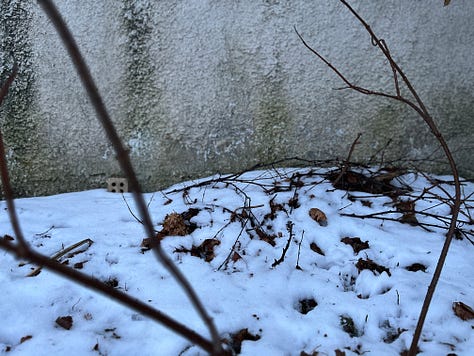
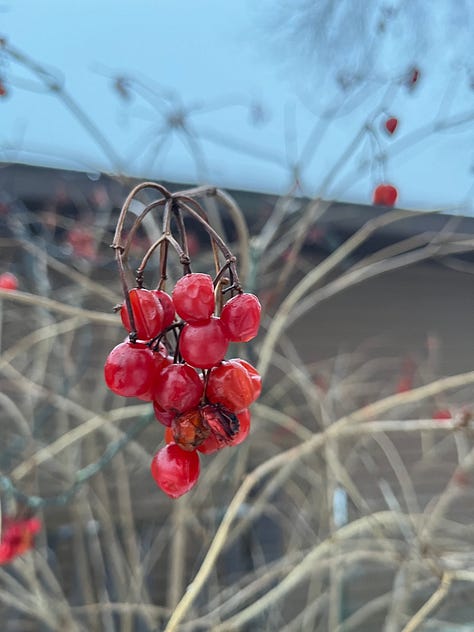
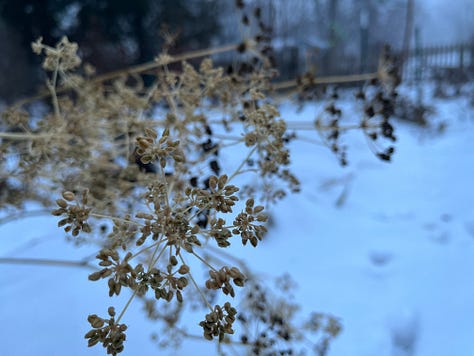

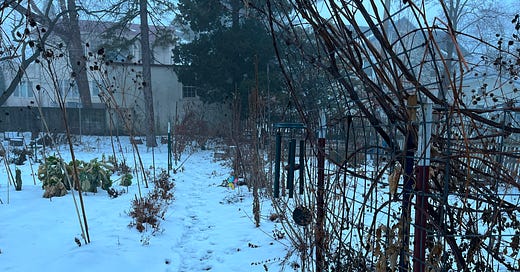



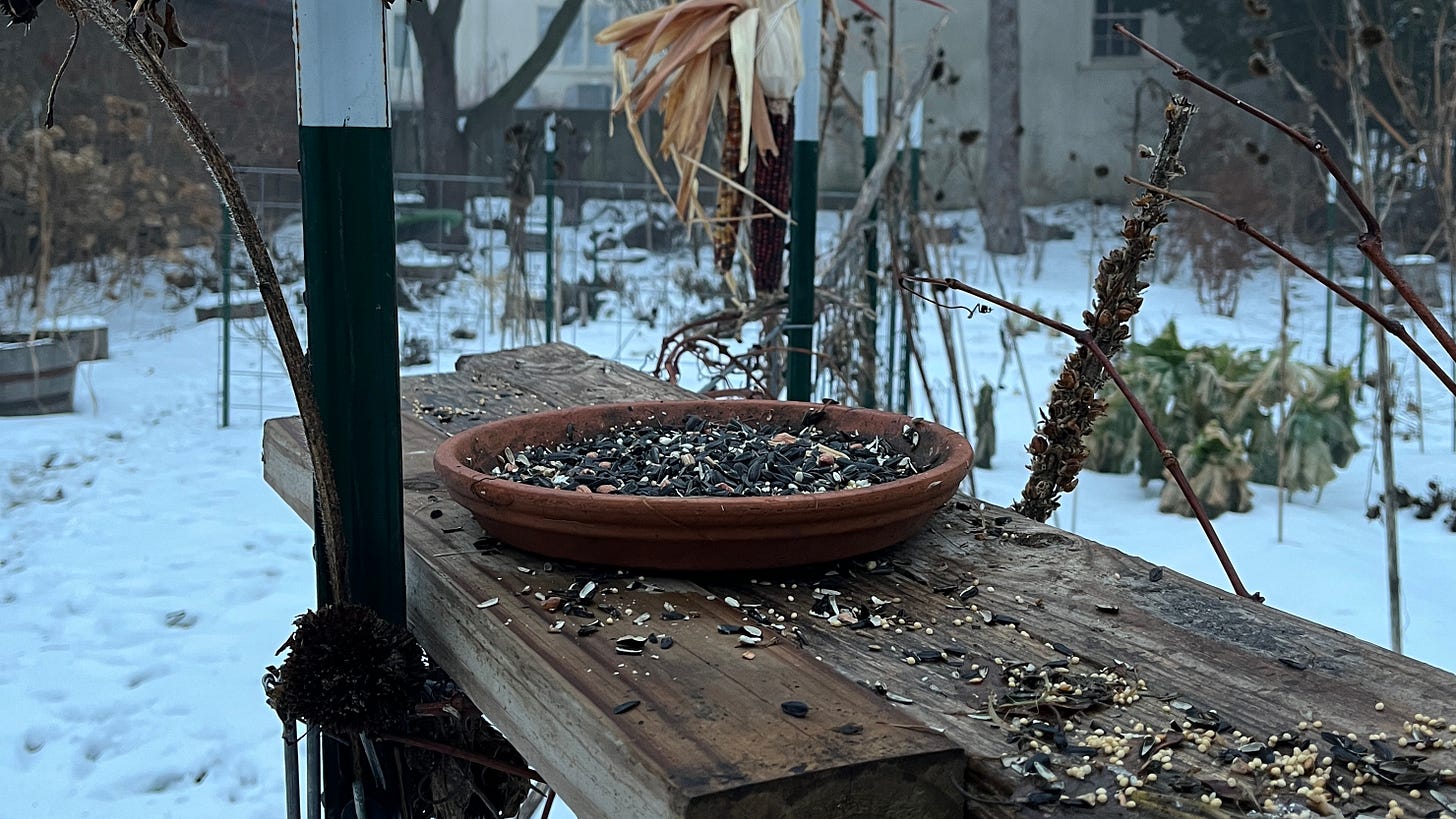
The cardinal taking a fully body bath at my parent’s backyard water bowl brought me such joy this morning! I would like to bring all the birds to my yard!
And this reminder to let things go a little…could extend beyond the yard :)